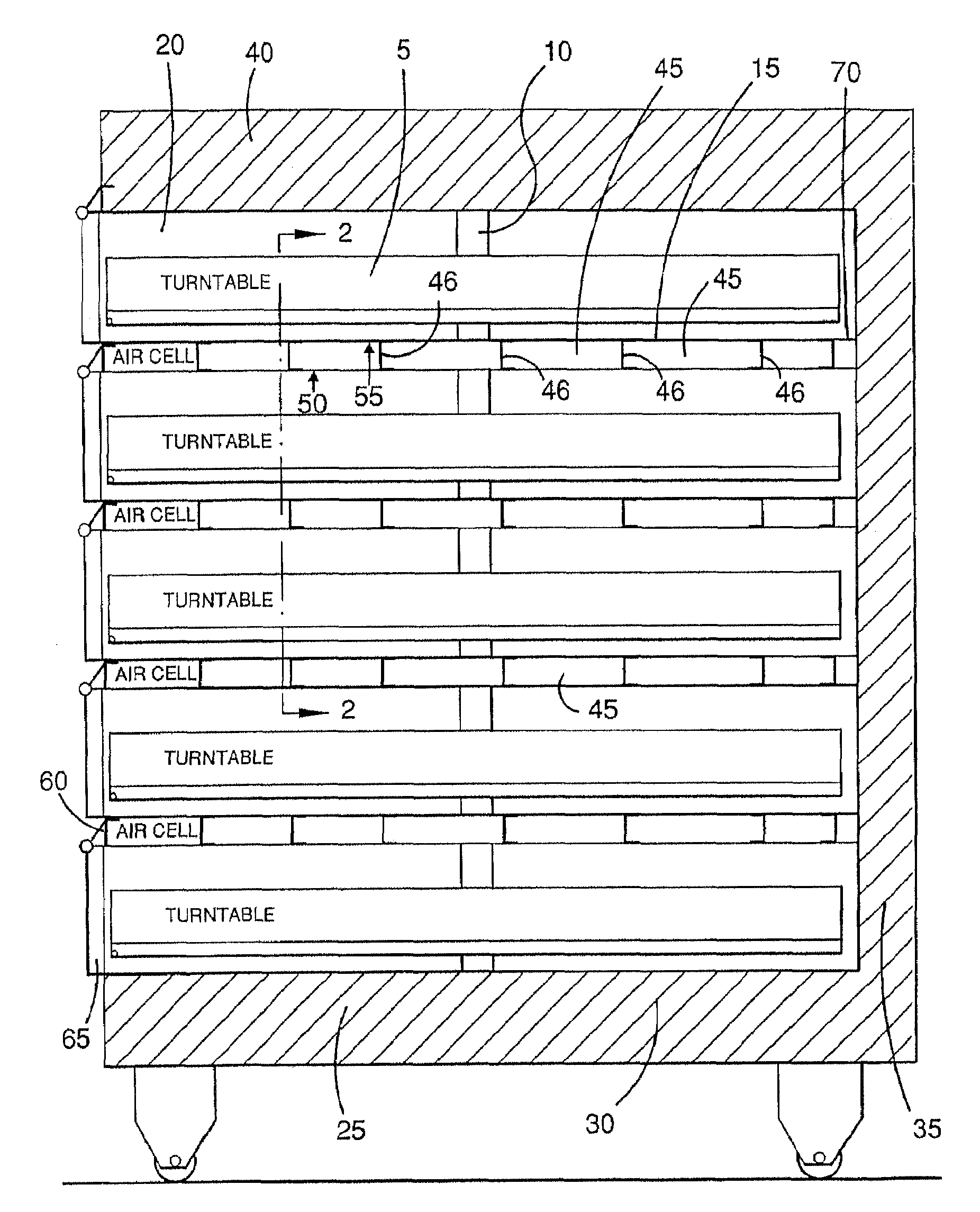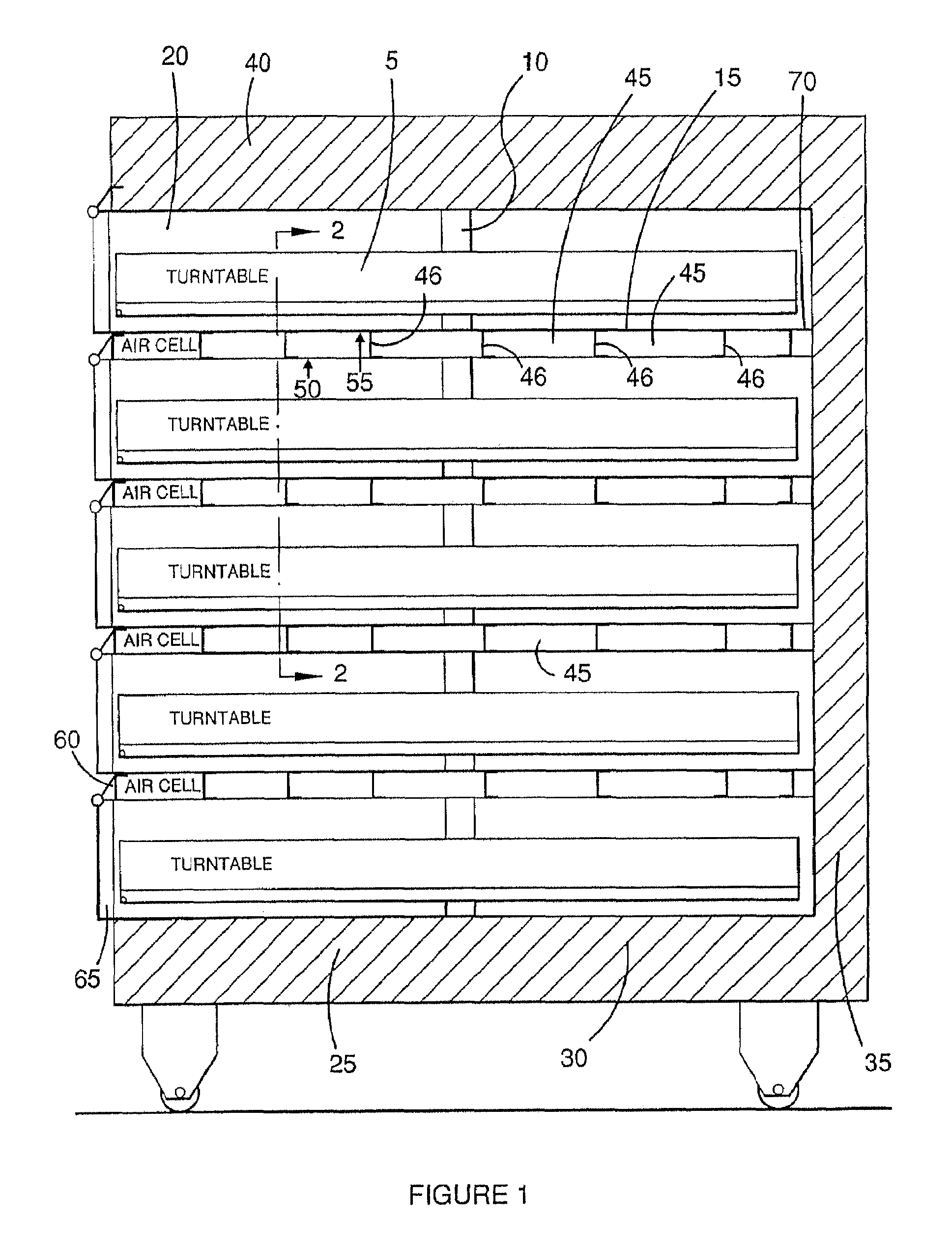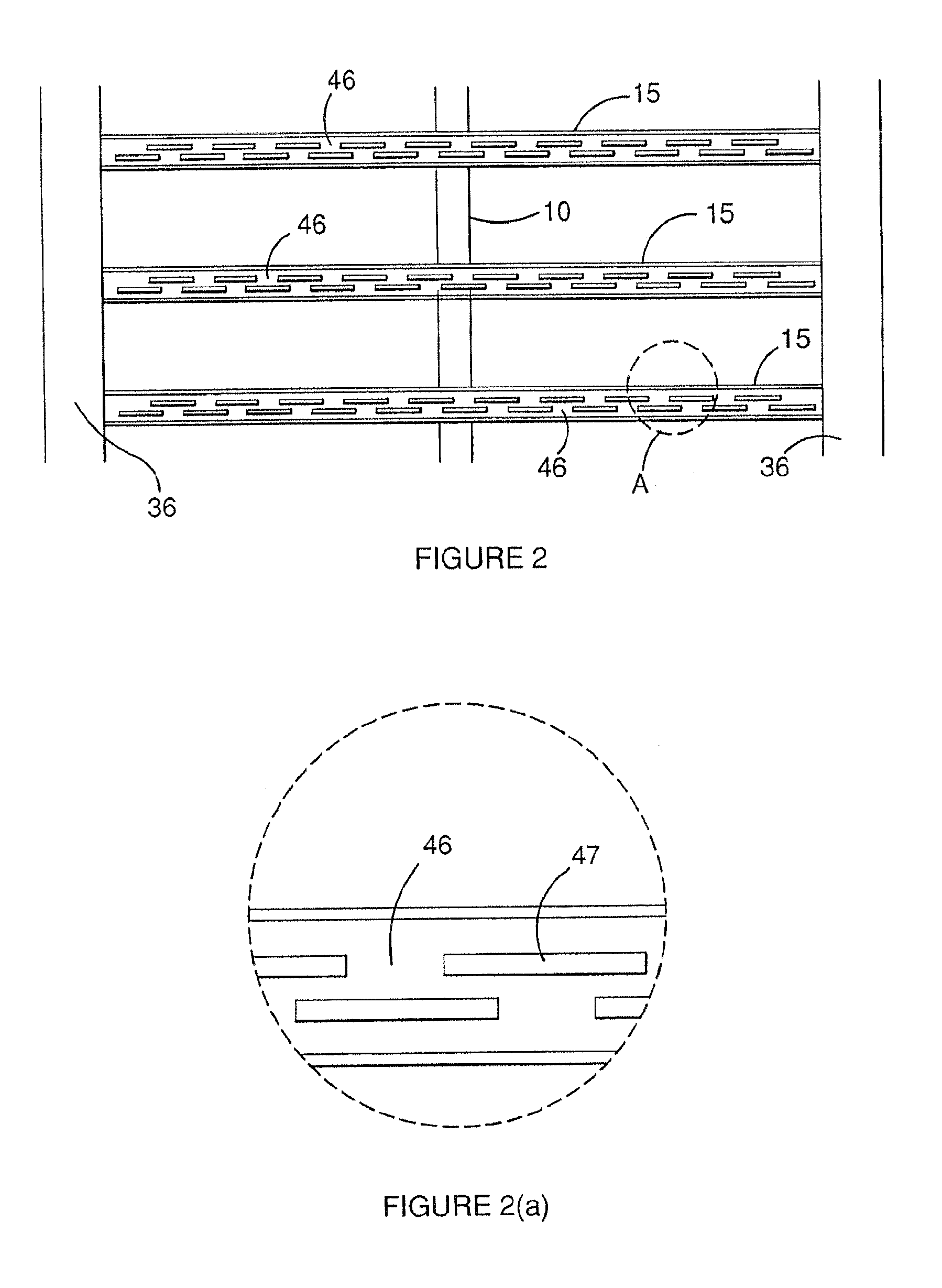Insulation for baking chambers in a multi-deck baking oven
a multi-deck baking oven and baking chamber technology, applied in baking, food processing, domestic heating details, etc., can solve the problem that the insulating material of conventional insulating layers takes a long time to heat up and cool down, and achieve the effect of reducing the heat flow ra
- Summary
- Abstract
- Description
- Claims
- Application Information
AI Technical Summary
Benefits of technology
Problems solved by technology
Method used
Image
Examples
Embodiment Construction
[0026]FIG. 1 illustrates a five deck baking oven, such as a Rotel™ type oven design, where each of the baking chambers 20 has a turntable 5 which revolve around a central shaft 10. Due to the rotating turntables, the heating elements (not shown), typically kelrod™ type electrically powered elements, are mounted above the oven (turntable) floor of each baking chamber. As the heating elements are not proximate to the insulation layer 15, relatively less insulation is required to retain the heat within each baking chamber 20.
[0027]The floor of the bottom most baking chamber 25 is typically fully sealed to the wall members of the internal oven housing cell 30. The roof of the top most baking chamber 40 is likewise sealed. Housing insulation under the bottom oven floor 30, oven side walls 36, and roof 40, retain heat in these housing members.
[0028]The insulation layer comprises a number of air cells or voids 45 separated by rib members or struts 46 which extend between oven side walls 36...
PUM
 Login to View More
Login to View More Abstract
Description
Claims
Application Information
 Login to View More
Login to View More - R&D
- Intellectual Property
- Life Sciences
- Materials
- Tech Scout
- Unparalleled Data Quality
- Higher Quality Content
- 60% Fewer Hallucinations
Browse by: Latest US Patents, China's latest patents, Technical Efficacy Thesaurus, Application Domain, Technology Topic, Popular Technical Reports.
© 2025 PatSnap. All rights reserved.Legal|Privacy policy|Modern Slavery Act Transparency Statement|Sitemap|About US| Contact US: help@patsnap.com



